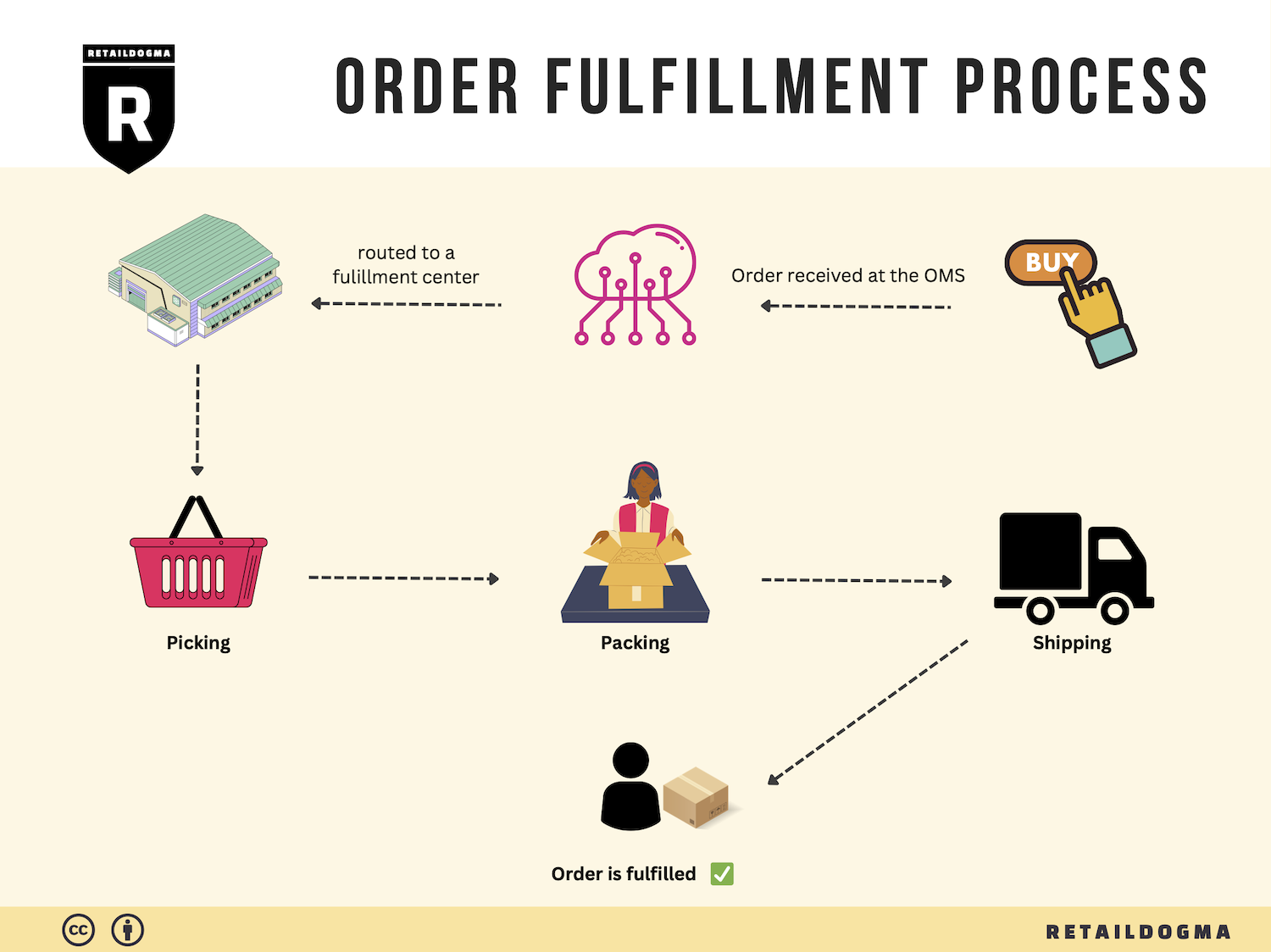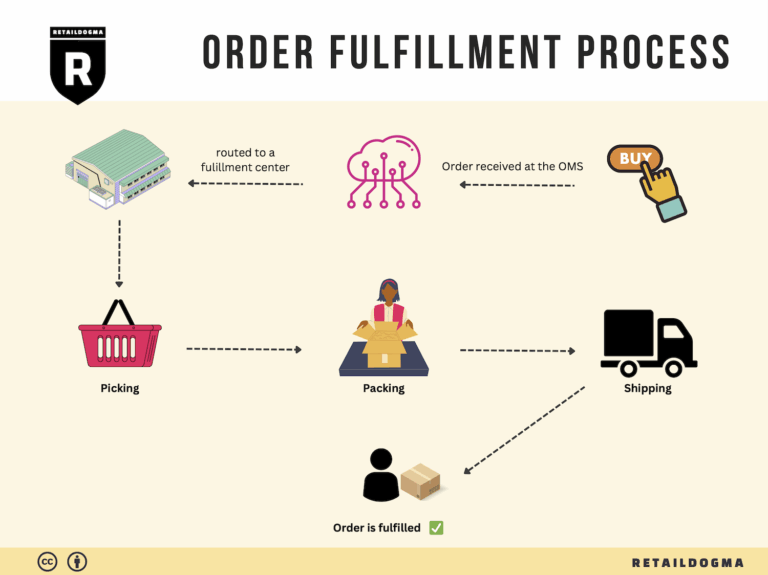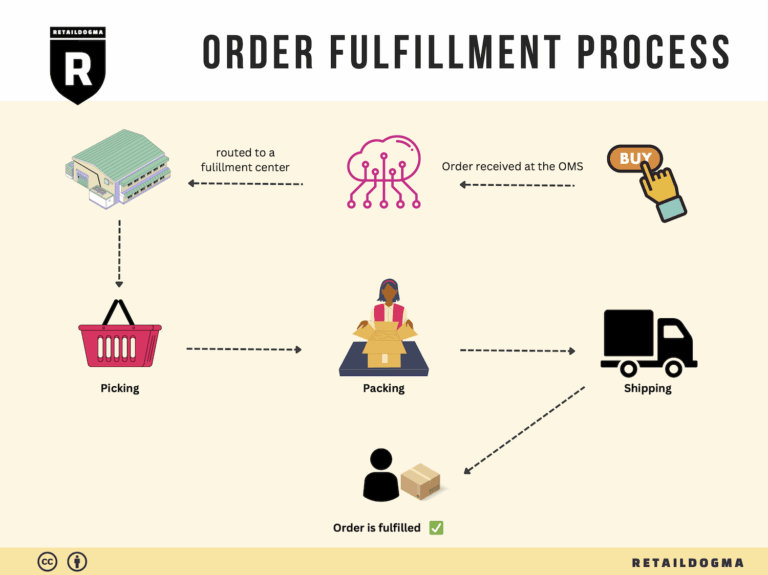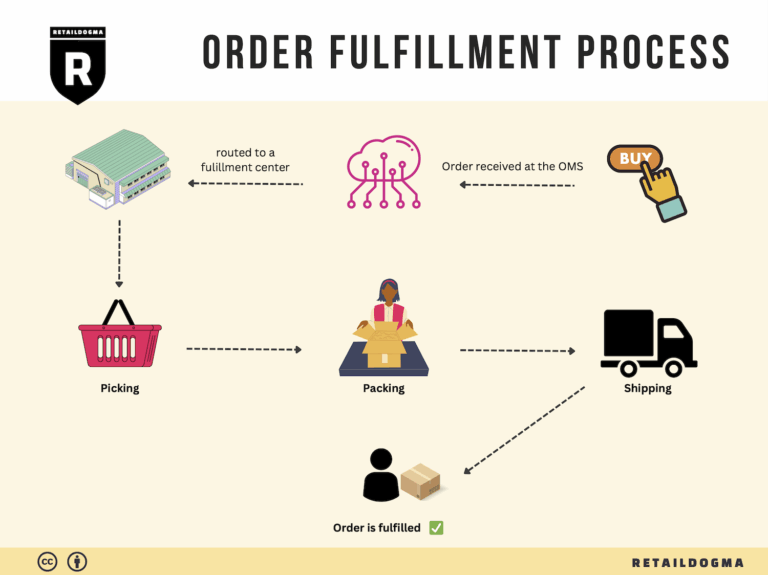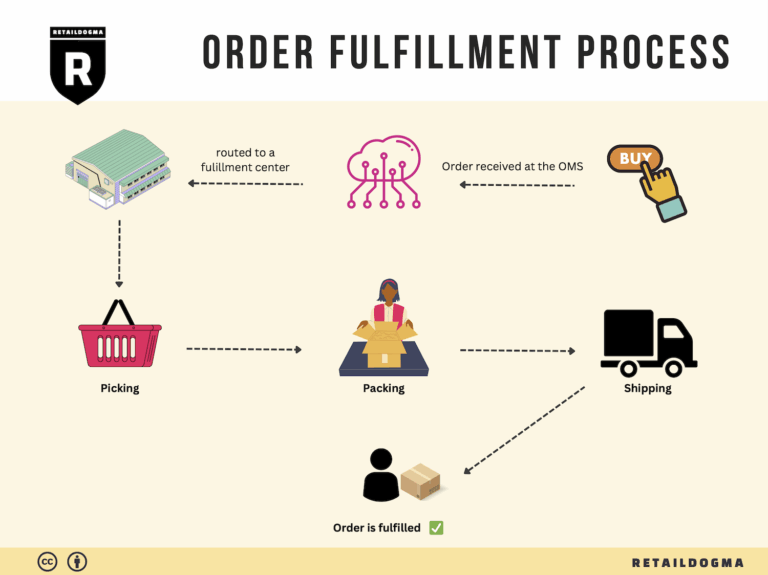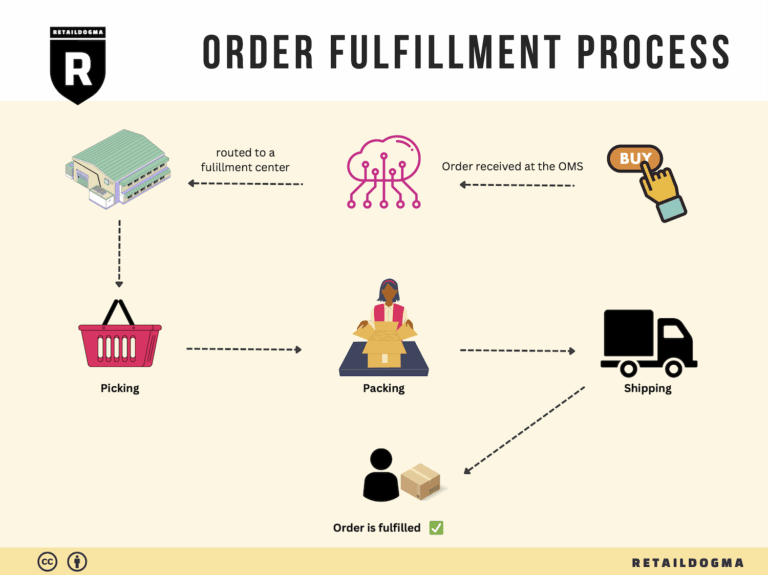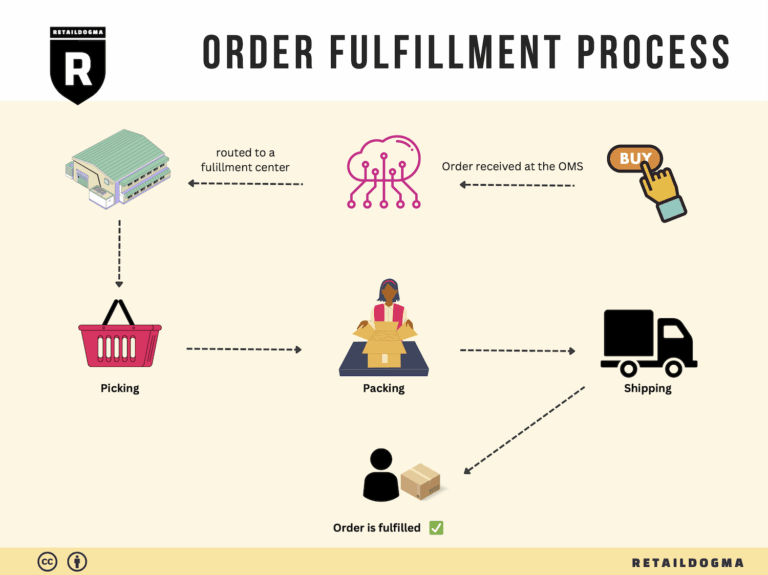What Is A Fulfillment Center? A Complete Guide (2025)
What is E-commerce Fulfillment? An Introduction for Growing Businesses
Understanding E-commerce Fulfillment: A Pathway to Streamlined Operations
As your online business begins to flourish, the excitement of increasing sales can quickly turn into an overwhelming challenge. One of the most common pain points faced by growing e-commerce businesses is managing the logistics of packing and shipping orders. The fulfillment process—essentially, the journey of getting a product from your store to your customer—can become a daunting task, especially when you’re juggling various responsibilities and striving to maintain excellent customer service.
E-commerce fulfillment involves several critical steps, including inventory management, order processing, picking and packing products, and shipping them to customers. As your business scales, handling these tasks in-house can become inefficient and costly. This is where understanding the various fulfillment models can make a significant difference.
In this guide, we will explore different fulfillment models, including Third-Party Logistics (3PL), Fulfillment by Amazon (FBA), and dropshipping. Each of these options offers unique benefits and challenges, allowing you to choose the one that aligns best with your business goals. We will also break down the core services involved in e-commerce fulfillment, such as warehousing, inventory management, and shipping logistics, providing you with insights into how these services can enhance your operational efficiency.
Selecting the right fulfillment partner is crucial for your success. We will discuss key factors to consider when evaluating potential partners, such as their reliability, shipping capabilities, customer service, and technology integration. Understanding pricing structures is equally important; we will outline common pricing models and what to expect regarding costs associated with different fulfillment options.
Ultimately, this guide aims to empower you—business owners, operations managers, and entrepreneurs—to make informed decisions about your logistics strategy. By understanding the intricacies of e-commerce fulfillment, you can streamline your operations, enhance customer satisfaction, and focus on what you do best: growing your business. Whether you are just starting or looking to scale, the insights provided here will help you navigate the complexities of fulfillment with confidence.
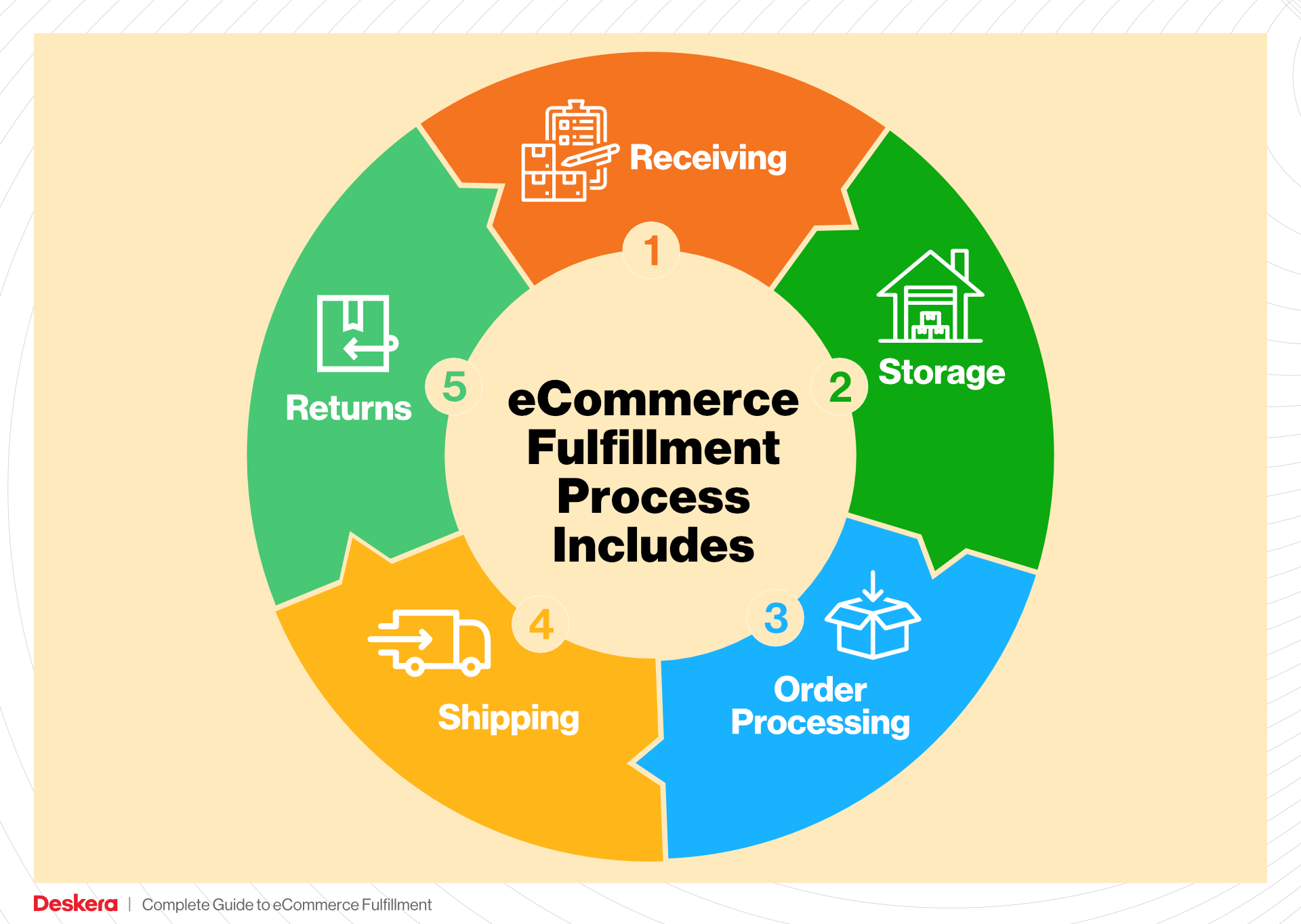
What You’ll Learn In This Guide
- What is E-commerce Fulfillment? An Introduction for Growing Businesses
- The Order Fulfillment Process: From ‘Buy’ Button to Customer’s Door
- Comparing Fulfillment Models: In-House vs. 3PL vs. Dropshipping
- A Deep Dive into Amazon FBA: Pros, Cons, and Who It’s For
- Core Services Offered by Fulfillment Centers
- How to Choose a Fulfillment Partner: A 6-Point Checklist
- Understanding Fulfillment Pricing: A Breakdown of Common Fees
- Frequently Asked Questions (FAQs) about Fulfillment
- Conclusion: Is Outsourcing Fulfillment the Right Move for Your Business?
- Important Disclaimer
The Order Fulfillment Process: From ‘Buy’ Button to Customer’s Door
1. Receiving Inventory
The order fulfillment process begins with receiving inventory from your dropshipping supplier. When a customer places an order on your online store, the first step is to ensure that the supplier has the product in stock and ready for shipment. This is crucial as it directly impacts order processing times and customer satisfaction.
Upon receiving the inventory, it’s essential to verify that the items match the purchase order in terms of quantity and specifications. This verification process helps to prevent discrepancies later in the fulfillment cycle. The key term associated with this step is SKU (Stock Keeping Unit), which helps in tracking products and managing inventory efficiently. By maintaining accurate SKU records, businesses can streamline the receiving process, reducing errors and ensuring that the right products are shipped to customers.
2. Warehouse Storage
Once the inventory is received, it must be organized and stored properly within the fulfillment center or warehouse. Effective warehouse storage is vital for maximizing efficiency and minimizing the time it takes to process orders. Products should be stored based on their demand and category, which facilitates quicker access during the picking process.
Proper storage techniques include using shelving systems, bins, or pallets, and implementing a systematic layout that optimizes space utilization. The concept of ABC analysis can be applied here, where items are categorized based on their sales volume—‘A’ items being the most frequently sold and requiring easy access. This organization allows for faster order fulfillment and ultimately leads to improved customer service.
3. Order Picking
Order picking is the process of retrieving items from the warehouse to fulfill customer orders. Once an order is placed, a pick list is generated, detailing the items that need to be collected. This step is critical because the accuracy of order picking directly affects customer satisfaction and return rates.
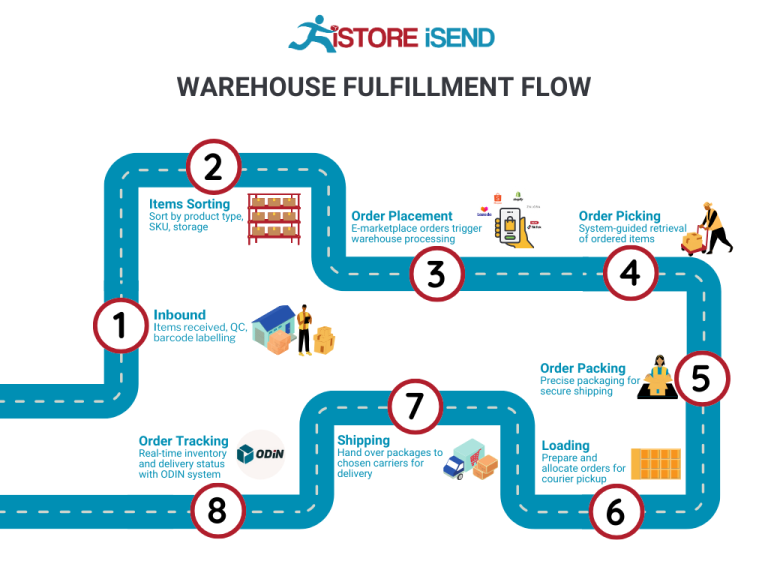
There are various picking methods, including single order picking, batch picking, and zone picking. The choice of method often depends on the volume of orders and the layout of the warehouse. The key term to remember here is pick lists, which are essential tools that guide staff in selecting the correct items. An efficient picking process reduces the time taken to fulfill orders, allowing businesses to provide faster shipping and better overall service.
4. Order Packing
After items are picked, the next step is order packing. This process involves securely packaging the products to ensure they arrive safely at the customer’s doorstep. Effective packing minimizes damage during transit and enhances the unboxing experience, which can significantly impact customer satisfaction and brand perception.
During packing, it’s important to use appropriate materials such as bubble wrap, packing peanuts, and sturdy boxes. Additionally, including branded elements like packing slips and thank-you notes can elevate the customer experience. The key term associated with this step is packaging optimization, which refers to the practice of designing packaging that protects products while minimizing shipping costs. Proper packing not only safeguards the items but also reflects professionalism and care for the customer.
5. Shipping & Delivery
The final step in the order fulfillment process is shipping and delivery. Once an order is packed, it is handed over to a shipping carrier for delivery to the customer. This step is crucial, as shipping times and reliability can significantly influence customer satisfaction and repeat purchases.
Choosing the right shipping carrier and service level is essential for balancing cost and speed. Businesses can offer various shipping options, including standard, expedited, and same-day delivery, to meet diverse customer needs. The key term here is tracking numbers, which are assigned by the shipping carrier and allow customers to monitor the status of their orders in real-time. Providing tracking information enhances transparency and reassures customers about their purchases, ultimately contributing to a positive shopping experience.
By understanding and optimizing each of these five steps—receiving inventory, warehouse storage, order picking, order packing, and shipping & delivery—e-commerce businesses can scale their operations effectively, ensuring that products move seamlessly from the buy button to the customer’s door.
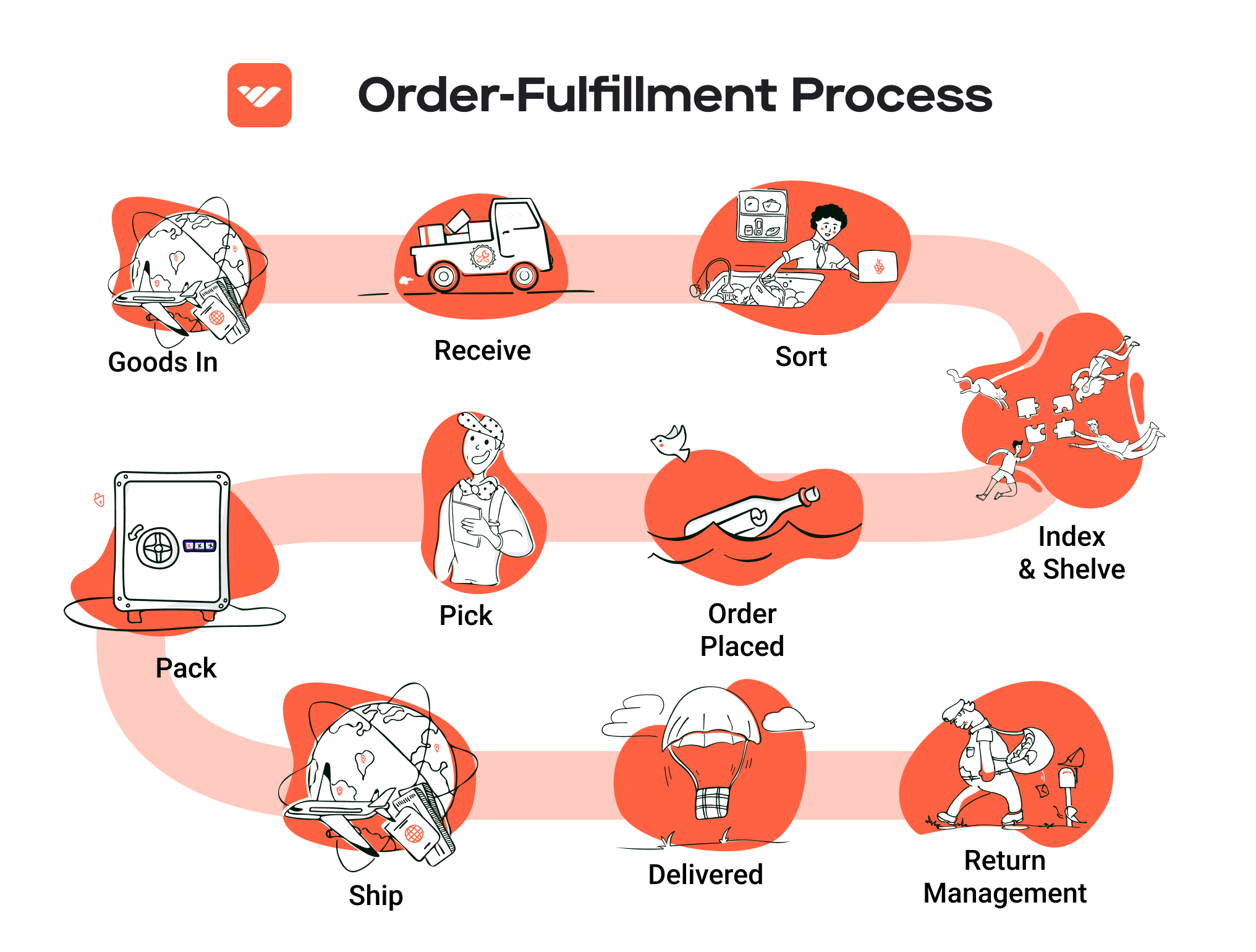
Comparing Fulfillment Models: In-House vs. 3PL vs. Dropshipping
Fulfillment Model Comparison
| Model | Who Handles Inventory | Best For (Business Stage) | Key Advantage | Key Disadvantage |
|---|---|---|---|---|
| In-House Fulfillment | The business itself | Established businesses | Greater control over inventory and fulfillment | High overhead costs and requires dedicated space |
| Third-Party Logistics (3PL) | Third-party logistics provider | Growing businesses | Scalability and expertise in logistics | Less control over inventory and fulfillment process |
| Dropshipping | Supplier (third party) | Startups or small businesses | Low capital investment and minimal risk | Low profit margins and reliance on supplier quality |
In-House Fulfillment
In-house fulfillment is when a business manages its inventory and shipping operations directly. This model is best suited for established businesses with sufficient capital and a stable customer base. By handling inventory in-house, businesses can maintain full control over their products, which allows for personalized packaging, quality control, and the ability to respond quickly to customer service inquiries. This model can foster a strong brand identity through unique packaging and enhanced customer experiences. However, in-house fulfillment comes with significant disadvantages, including high overhead costs related to warehousing, staffing, and the need for an efficient logistics system. Furthermore, businesses must invest in technology and infrastructure to manage inventory effectively, which can be a barrier for smaller firms or startups looking to scale.
Third-Party Logistics (3PL)
Third-party logistics (3PL) involves outsourcing logistics and fulfillment services to specialized companies. This model is particularly beneficial for growing businesses that seek to scale without the burden of managing inventory and shipping operations themselves. 3PL providers typically offer extensive networks and expertise, allowing businesses to optimize shipping routes, reduce costs, and improve delivery times. Additionally, partnering with a 3PL allows businesses to focus on core activities like marketing and sales, while logistics experts handle the complexities of storage, packing, and shipping. However, the trade-off is that businesses relinquish some control over their inventory and fulfillment processes. This can lead to challenges in maintaining brand consistency and addressing customer service issues, as the 3PL provider is the direct point of contact for shipping inquiries and issues.
Dropshipping
Dropshipping is a fulfillment model that allows businesses to sell products without holding any inventory. Instead, when a customer places an order, the retailer forwards the order details to a supplier, who then handles the packaging and shipping directly to the customer. This model is ideal for startups or small businesses looking to enter the e-commerce space with minimal financial risk, as it requires little to no upfront investment in inventory. The key advantages of dropshipping include low overhead costs, ease of starting a business, and access to a wide range of products without the burden of managing stock levels. However, dropshipping also presents notable challenges, such as lower profit margins due to intense competition and reliance on suppliers for quality control and shipping reliability. If a supplier experiences delays or errors, the retailer must address these issues with customers, which can harm the retailer’s reputation. Additionally, businesses may struggle with the lack of control over the unboxing experience, which is crucial for customer satisfaction and brand loyalty.
Conclusion
Choosing the right fulfillment model is essential for e-commerce businesses aiming to scale their operations effectively. Each model—whether in-house fulfillment, 3PL, or dropshipping—has its own set of advantages and disadvantages that cater to different business stages and strategies. Business owners should carefully assess their current needs, resources, and long-term goals to select a fulfillment approach that aligns with their operational capabilities and customer service aspirations. By understanding these models, entrepreneurs can make informed decisions that will support their growth and enhance their overall business performance.
A Deep Dive into Amazon FBA: Pros, Cons, and Who It’s For
Understanding Fulfillment by Amazon (FBA)
Fulfillment by Amazon (FBA) is a service provided by Amazon that allows sellers to store their products in Amazon’s fulfillment centers. In turn, Amazon takes care of the storage, packaging, shipping, and customer service for these products. This service has become a popular choice for e-commerce businesses looking to leverage Amazon’s vast logistics network and customer base.
How FBA Works
The FBA process can be broken down into several key steps:
-
Product Preparation: Sellers prepare their products according to Amazon’s guidelines and send them to Amazon’s fulfillment centers. Proper labeling and packaging are crucial to ensure smooth processing.
-
Storage: Once the products arrive at the fulfillment center, they are stored until an order is placed. Amazon manages the inventory levels and provides sellers with reports on stock levels and performance.
-
Order Fulfillment: When a customer places an order for a product fulfilled by FBA, Amazon picks, packs, and ships the item directly to the customer. This is where the efficiency of Amazon’s logistics network shines.
-
Customer Service: Amazon handles all customer inquiries and returns related to FBA products, providing a seamless experience for both sellers and buyers.
-
Tracking and Reporting: Sellers have access to detailed reports and tracking information, allowing them to monitor their sales performance and inventory levels effectively.
Pros of FBA
1. Prime Eligibility
One of the most significant advantages of using FBA is eligibility for Amazon Prime. Products fulfilled by Amazon are automatically enrolled in the Prime program, which provides customers with free two-day shipping and a higher likelihood of purchase. This can lead to increased sales and visibility.
2. Enhanced Customer Trust
Amazon is a globally recognized brand known for its customer service. By using FBA, sellers benefit from the trust associated with Amazon. Customers are more likely to purchase products that are fulfilled by Amazon due to the assurance of reliable shipping and customer support.
3. Multi-Channel Fulfillment
FBA is not limited to Amazon’s marketplace. Sellers can utilize FBA for orders placed on their own websites or other sales channels. This multi-channel fulfillment option allows businesses to streamline their logistics processes while benefiting from Amazon’s robust infrastructure.
4. Simplified Logistics
Outsourcing storage, packing, and shipping to Amazon simplifies logistics for sellers. This allows them to focus on other aspects of their business, such as product development and marketing, rather than worrying about order fulfillment.
5. Scalability
FBA is an excellent option for scaling businesses. As sales increase, sellers can easily send more inventory to Amazon without the need for additional warehousing or staff. This flexibility is essential for businesses looking to grow rapidly.
Cons of FBA
1. High Fees
While FBA offers numerous benefits, it comes at a cost. Amazon charges various fees, including storage fees, fulfillment fees, and additional charges for long-term storage. These costs can significantly reduce profit margins, particularly for low-cost items.
2. Strict Inventory Rules
Amazon has stringent inventory management policies that sellers must adhere to. This includes limits on the number of units that can be stored in fulfillment centers and requirements for inventory performance metrics. Failure to comply can result in penalties or the removal of products from the platform.
3. Commingling Risks
With FBA, products from different sellers are often stored together (commingling). This can pose risks, such as receiving returns of products that are not yours or having your inventory mixed with lower-quality items. Sellers need to be aware of this risk, especially if they are selling branded products.
4. Limited Control Over Fulfillment
While Amazon handles shipping and customer service, sellers have limited control over the fulfillment process. Issues such as shipping delays, mistakes in order processing, or poor packaging can reflect poorly on the seller, even if they are not directly responsible.
5. Complex Returns Process
Returns through FBA can be complex, as Amazon manages the process. Sellers must adhere to Amazon’s return policies, which may not align with their own. This can lead to challenges in handling returns efficiently and maintaining customer satisfaction.
Who is FBA Best For?
Fulfillment by Amazon is best suited for:
-
Established Brands: Brands looking to leverage Amazon’s logistics and customer trust can benefit significantly from FBA, especially if they have a wide range of products.
-
E-commerce Entrepreneurs: New sellers looking to enter the market without the burden of managing logistics can find FBA a valuable option for starting their businesses.
-
Businesses with High Sales Volume: Companies that expect to sell large quantities of products can benefit from the scalability and efficiency of FBA, as it allows them to focus on growth rather than logistics.
-
Multi-Channel Sellers: Businesses that sell across multiple platforms can streamline their fulfillment processes by using FBA for all orders, enhancing operational efficiency.
In conclusion, while Fulfillment by Amazon offers a host of benefits that can help scale e-commerce operations, it is essential for sellers to weigh the associated costs and potential challenges. Understanding the intricacies of FBA will allow businesses to make informed decisions that align with their goals and operational capabilities.
Core Services Offered by Fulfillment Centers
Inventory Management & Warehousing
Inventory management and warehousing are foundational services provided by fulfillment centers that allow e-commerce businesses to maintain optimal stock levels without the burden of managing physical inventory themselves.
Fulfillment centers utilize sophisticated inventory management systems that track stock levels in real time, providing insights into inventory turnover rates, reorder points, and demand forecasting. This technology enables businesses to avoid overstocking or stockouts, both of which can lead to lost sales and increased holding costs.
Benefits:
1. Cost Efficiency: By outsourcing inventory management, businesses can reduce overhead costs associated with renting warehouse space, hiring staff, and managing inventory manually.
2. Scalability: As your e-commerce business grows, fulfillment centers can easily scale operations, allowing you to increase inventory levels without the need for additional infrastructure.
3. Focus on Core Activities: With inventory concerns handled by a professional service, e-commerce owners can concentrate on marketing, customer service, and product development, ultimately driving growth.
Pick and Pack Services
Pick and pack services are crucial for the efficient processing of customer orders. This service involves selecting the right products from the warehouse (picking) and packaging them for shipment (packing). Fulfillment centers streamline this process to ensure fast and accurate order fulfillment.
When an order is received, fulfillment center staff quickly locate the items in the warehouse, package them according to best practices (including proper padding and branding), and prepare them for shipping. Advanced technology, such as barcode scanning and automated packing systems, is often employed to minimize errors and enhance efficiency.
Benefits:
1. Speed: With dedicated staff and optimized workflows, fulfillment centers can significantly reduce order processing times, enabling businesses to offer faster shipping options to customers.
2. Accuracy: The use of technology reduces the likelihood of picking errors, ensuring that customers receive the correct items and reducing return rates.
3. Customization: Fulfillment centers often allow for custom packaging and branding, which can enhance the customer experience and reinforce brand identity.
Kitting and Assembly
Kitting and assembly services involve the grouping of individual items into ready-to-ship sets or bundles. This is particularly useful for businesses that sell products that are often purchased together or that require assembly prior to shipping.
Fulfillment centers can assemble these kits according to specific requirements, ensuring that the products are packaged together, which saves time for both the business and the customer. This service can include anything from assembling gift sets to preparing complex product configurations.
Benefits:
1. Enhanced Customer Satisfaction: By offering pre-assembled kits, businesses can provide convenience to customers, making it easier for them to purchase related items in one go.
2. Increased Sales Opportunities: Kitting can encourage upselling and cross-selling, as customers are more likely to buy a bundled offer rather than individual items.
3. Streamlined Operations: By outsourcing kitting and assembly, businesses can reduce the complexity of their operations, allowing them to focus on core business functions without getting bogged down in logistical details.
Returns Management (Reverse Logistics)
Returns management, or reverse logistics, is a critical service offered by fulfillment centers that addresses the process of handling returned products. In the e-commerce space, where online shopping has become prevalent, managing returns effectively is essential for maintaining customer satisfaction and loyalty.
Fulfillment centers manage the entire returns process, from receiving returned items to inspecting their condition, restocking them, or processing them for liquidation. This service ensures that returns are handled efficiently and in accordance with the business’s policies.
Benefits:
1. Improved Customer Experience: A streamlined returns process enhances customer satisfaction, as customers appreciate hassle-free returns. This can lead to repeat business and positive reviews.
2. Cost Reduction: By efficiently managing returns, fulfillment centers can minimize losses associated with returned goods and help businesses recover value from returned items through resale or liquidation.
3. Data Insights: Returns management provides valuable data on customer preferences and product performance, allowing businesses to make informed decisions about inventory and product offerings.
In summary, partnering with a fulfillment center for these core services allows e-commerce businesses to operate more efficiently, reduce costs, and focus on growth strategies. By leveraging these specialized services, businesses can enhance their operational capabilities and improve the overall customer experience.
How to Choose a Fulfillment Partner: A 6-Point Checklist
Location & Warehouse Network
Importance: The geographic location of your fulfillment partner’s warehouses is crucial for optimizing shipping times and costs. A partner with strategically placed warehouses can reduce delivery times and shipping expenses, especially if you have a diverse customer base across different regions.
Questions to Ask:
– Where are your warehouses located, and how does this impact shipping times to my key markets?
– Do you have multiple fulfillment centers, and how does that affect my order fulfillment?
– Can you provide insight into your shipping carriers and their service levels?
Technology & Integrations
Importance: In today’s e-commerce landscape, efficient operations rely heavily on technology. Your fulfillment partner should have robust technology solutions that integrate seamlessly with your e-commerce platform, inventory management systems, and other tools to ensure smooth operations.
Questions to Ask:
– What technology do you use for order management and tracking?
– Can your system integrate with my existing e-commerce platform (e.g., Shopify, WooCommerce)?
– Do you offer real-time inventory updates, and how is data shared between our systems?
– What reporting tools do you provide to help me track order metrics and performance?
Specializations (e.g., Cold Storage, Oversized Items)
Importance: Depending on the nature of your products, you may need a fulfillment partner with specialized capabilities. This could include cold storage for perishables, handling oversized items, or managing hazardous materials.
Questions to Ask:
– Do you have any special handling capabilities for my product types (e.g., temperature control, fragile items)?
– What experience do you have with my specific product categories?
– Are there any additional costs associated with specialized storage or handling?
Scalability & Capacity
Importance: As your business grows, your fulfillment needs will evolve. It’s essential to partner with a fulfillment provider that can scale operations in line with your growth trajectory without compromising service quality.
Questions to Ask:
– What is your current capacity, and how do you handle spikes in demand (e.g., holiday seasons)?
– Can you accommodate my projected growth over the next 1-3 years?
– What measures do you have in place to ensure timely order processing during peak times?
Pricing and Contracts
Importance: Understanding the pricing structure and contract terms is vital for budgeting and profitability. Look for transparency in pricing, including any hidden fees, and ensure the contract allows for flexibility as your business needs change.
Questions to Ask:
– What is your pricing model (e.g., per order, per item, monthly fees)?
– Are there any additional fees I should be aware of (e.g., storage, handling, returns)?
– What is the length of your contract, and what are the terms for cancellation or changes?
– How do you handle pricing adjustments in case of unexpected cost increases?
Customer Support & Reviews
Importance: Exceptional customer support can make a significant difference in resolving issues quickly and maintaining a positive customer experience. Additionally, checking reviews and testimonials can provide insights into the reliability and performance of the fulfillment partner.
Questions to Ask:
– What kind of customer support do you offer (e.g., dedicated account manager, 24/7 support)?
– How do you handle order-related issues, and what is your process for resolving disputes?
– Can you provide references or testimonials from other businesses in my industry?
– What online reviews or ratings do you have on third-party platforms?
Conclusion
Choosing the right fulfillment partner is a critical decision that can impact your business’s efficiency, customer satisfaction, and ultimately, your bottom line. By evaluating potential partners against this checklist, you can make an informed choice that aligns with your operational needs and growth objectives. Engaging with a fulfillment partner that meets these criteria will set the foundation for a successful e-commerce operation.
Understanding Fulfillment Pricing: A Breakdown of Common Fees
Initial Setup Fees
Initial setup fees are one-time charges that businesses incur when they first engage with a fulfillment provider. These fees cover the costs associated with establishing your account, integrating your e-commerce platform with the fulfillment center, and setting up necessary software or systems for order management.
Typically, initial setup fees may range from a few hundred to several thousand dollars, depending on the complexity of your operations and the technology involved. Factors influencing the cost include the number of SKUs you plan to manage, any custom integrations required, and the level of service you expect from the fulfillment provider. To minimize initial costs, consider providers that offer flexible setups or scaling options as your business grows.
Receiving Fees
Receiving fees are charged when your products arrive at the fulfillment center. This fee compensates the warehouse for inspecting, unloading, and logging the inventory into their system. The charges are usually based on the volume of goods received, often calculated per pallet or per item.
For example, you might expect to pay $25 to $50 per pallet received, or a smaller fee per unit for bulk items. It’s essential to understand these fees upfront, as they can add up quickly, especially if you have frequent shipments. To manage costs effectively, consolidate shipments whenever possible and ensure that your products are packaged efficiently to minimize handling time.
Storage Fees (per pallet/bin)
Storage fees are ongoing charges for keeping your inventory in the fulfillment center. These fees are typically assessed on a monthly basis and can be calculated per pallet, bin, or even per square foot of storage space utilized.
Rates can vary significantly depending on the provider and location, but you can expect storage fees to range from $10 to $40 per pallet per month. Some fulfillment centers offer tiered pricing based on the volume of goods stored, which can be beneficial for businesses that anticipate fluctuating inventory levels. To reduce storage costs, monitor your inventory turnover and consider using just-in-time inventory practices to minimize the amount of stock held at the fulfillment center.
Pick & Pack Fees (per item/order)
Pick and pack fees are charged for the labor involved in retrieving items from storage and preparing them for shipment. This fee is typically calculated on a per-order or per-item basis, reflecting the time and effort required to fulfill each order.
For instance, you might pay $1 to $3 per item picked and packed, with additional fees for complex orders that require special handling, such as kitting or bundling products. It’s crucial to factor in these fees when pricing your products, as they can significantly impact your profit margins. To optimize pick and pack efficiency, work with your fulfillment provider to streamline your inventory layout and order processing systems.
Shipping Fees
Shipping fees are one of the most variable costs associated with fulfillment and can significantly affect your overall expenses. These fees cover the cost of transporting goods from the fulfillment center to your customers and can be influenced by factors such as package weight, dimensions, destination, and shipping method (e.g., standard, expedited).
Shipping fees can be calculated based on the actual carrier rates, which vary by provider (e.g., UPS, FedEx, USPS), or through flat-rate shipping models offered by some fulfillment centers. Understanding the shipping costs involved is crucial for maintaining competitive pricing while ensuring timely delivery. To mitigate shipping fees, consider negotiating rates with carriers, using a fulfillment center that offers discounted shipping, or implementing a free shipping strategy with minimum purchase thresholds.
Tips for Getting an Accurate Quote
When seeking quotes from fulfillment providers, it’s essential to provide as much detail as possible about your business operations. Here are some practical tips to ensure you receive an accurate estimate:
-
Inventory Details: Share specifics about your product range, including sizes, weights, and any special handling requirements.
-
Order Volume: Provide estimates of your expected order volume, both daily and monthly, to help the provider gauge the scale of operations needed.
-
Shipping Requirements: Specify your shipping preferences, including regions you serve and any specific carrier requirements.
-
Integration Needs: Discuss any existing e-commerce platforms or systems that need integration to ensure seamless order processing.
-
Request a Breakdown: Ask for a detailed breakdown of all fees, including initial setup, receiving, storage, pick & pack, and shipping fees, to avoid surprises later.
By being thorough in your communication and understanding the various fee structures, you can make more informed decisions about which fulfillment partner will best suit your business needs.
Frequently Asked Questions (FAQs) about Fulfillment
1. What is dropshipping fulfillment?
Dropshipping fulfillment is a method where an online retailer sells products without holding inventory. Instead, when a sale occurs, the retailer places an order with a third-party supplier who handles packaging and shipping directly to the customer. This allows businesses to focus on marketing and sales while outsourcing logistics.
2. What are the main benefits of dropshipping fulfillment?
The primary benefits of dropshipping fulfillment include:
– Low Capital Requirements: No need to purchase inventory upfront, reducing financial risk.
– Ease of Start-Up: Minimal logistical management allows anyone to start an online store quickly.
– Low Overheads: With no inventory costs, businesses can operate with minimal expenses.
– Scalability: Suppliers handle fulfillment, enabling retailers to scale operations without significant manual effort.
– Wide Product Range: Retailers can easily expand their offerings by adding new products from suppliers.
3. What challenges do businesses face with dropshipping fulfillment?
Common challenges include:
– Low Profit Margins: High competition can drive prices down, making it difficult to maintain profitability.
– Supplier Reliability: Mistakes in order fulfillment can lead to customer dissatisfaction and damage your brand’s reputation.
– Poor Unboxing Experience: Since you have no control over packaging, it may not meet customer expectations.
– Shipping Delays: Longer shipping times can occur, especially with international suppliers, affecting customer satisfaction.
4. How does the order process work in dropshipping fulfillment?
The typical order process involves:
1. A customer places an order on your online store.
2. The retailer receives notification of the order and processes payment.
3. The retailer forwards the order details to the dropshipping supplier.
4. The supplier packages and ships the product directly to the customer.
5. The retailer sends tracking information to the customer.
5. What is the difference between a warehouse and a fulfillment center?
A warehouse is primarily used for storing goods, whereas a fulfillment center is designed for processing and shipping orders. Fulfillment centers often have advanced technology for inventory management, order processing, and shipping, allowing for quicker turnaround times and better customer service.
6. What is a 3PL (Third-Party Logistics)?
A 3PL is a service provider that manages logistics and supply chain functions for businesses. This includes warehousing, inventory management, and shipping. In the context of dropshipping, a 3PL can serve as the intermediary that handles fulfillment on behalf of the retailer, allowing them to focus on sales and marketing.
7. How much do fulfillment services cost?
Fulfillment service costs can vary widely based on factors such as order volume, shipping destinations, and additional services (like packaging and returns). Generally, costs may include:
– Storage Fees: Charged for the space used to store your products.
– Pick and Pack Fees: Costs for retrieving items from the warehouse and preparing them for shipment.
– Shipping Fees: Charges related to delivering the products to customers, which can vary by carrier and distance.
8. How can I find reliable dropshipping suppliers?
To find trustworthy dropshipping suppliers, consider:
– Researching Reviews: Check supplier reviews on platforms like DSers or Shopify.
– Evaluating Responsiveness: Contact suppliers to assess their customer service.
– Reviewing Terms: Look for fair fees, low order minimums, and clear return policies.
– Testing Products: Order samples to evaluate product quality and shipping speed.
9. How do I handle returns in a dropshipping model?
Returns in dropshipping can be complex as policies vary by supplier. Typically, the process involves:
1. The customer requests a return through your store.
2. You contact the supplier for a return merchandise authorization (RMA).
3. Depending on the supplier’s policy, you may need to arrange for the return shipping.
4. You communicate the return process to the customer, ensuring a smooth experience.
10. What should I look for in a dropshipping fulfillment partner?
When selecting a dropshipping fulfillment partner, prioritize:
– Reliability: Consistent order accuracy and timely shipping.
– Customer Support: Accessible and responsive support for both you and your customers.
– Shipping Options: Various shipping methods to meet customer expectations for delivery times.
– Technology Integration: Compatibility with your e-commerce platform for seamless order processing.
Conclusion: Is Outsourcing Fulfillment the Right Move for Your Business?
Evaluating the Benefits of Outsourcing Fulfillment
Outsourcing fulfillment can be a transformative strategy for e-commerce businesses looking to scale efficiently. One of the primary advantages is the significant time savings it offers. By entrusting a fulfillment service with order processing, packaging, and shipping, business owners can focus on core activities such as marketing, product development, and customer engagement. This shift not only enhances productivity but also allows for better allocation of resources, ultimately driving growth.
Scalability is another compelling reason to consider fulfillment services. As your business grows, so do your order volumes. A competent fulfillment partner can seamlessly handle increasing demand without the operational headaches of managing inventory or logistics. This adaptability enables you to explore new sales channels and expand your product offerings without the constraints typically associated with traditional fulfillment methods.
Moreover, partnering with an experienced fulfillment service brings expertise that can significantly enhance your customer experience. These providers often have established networks, advanced technology, and best practices in place to ensure quick and accurate order fulfillment. This not only minimizes errors but also improves shipping times, which is a crucial factor in customer satisfaction.
However, the success of outsourcing fulfillment hinges on selecting the right partner. It’s essential to conduct thorough research, considering factors such as reliability, responsiveness, and service quality. A poor choice in fulfillment partner can lead to operational issues that may hinder your growth.
As you evaluate your fulfillment strategy, take the time to audit your current shipping processes. Are they efficient? Can they support your growth goals? By assessing these elements, you can determine whether partnering with a fulfillment service is the strategic next step for your business. Empower your growth journey by leveraging the right fulfillment solutions today.
Important Disclaimer
⚠️ Important Disclaimer
The information in this guide is for educational purposes. Fulfillment services, pricing, and platform features change frequently. Always conduct your own due diligence and consult with providers directly before making business decisions.
